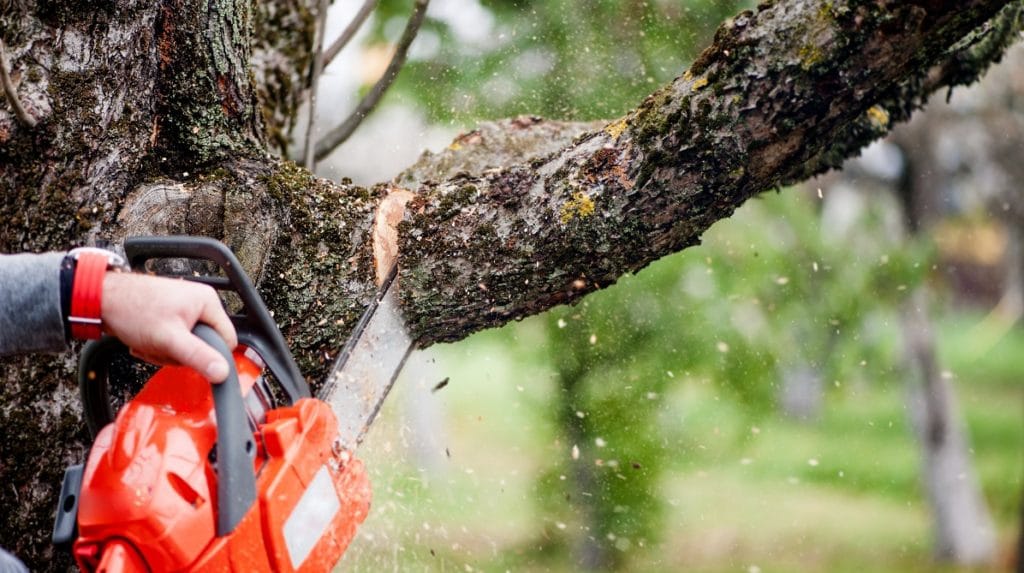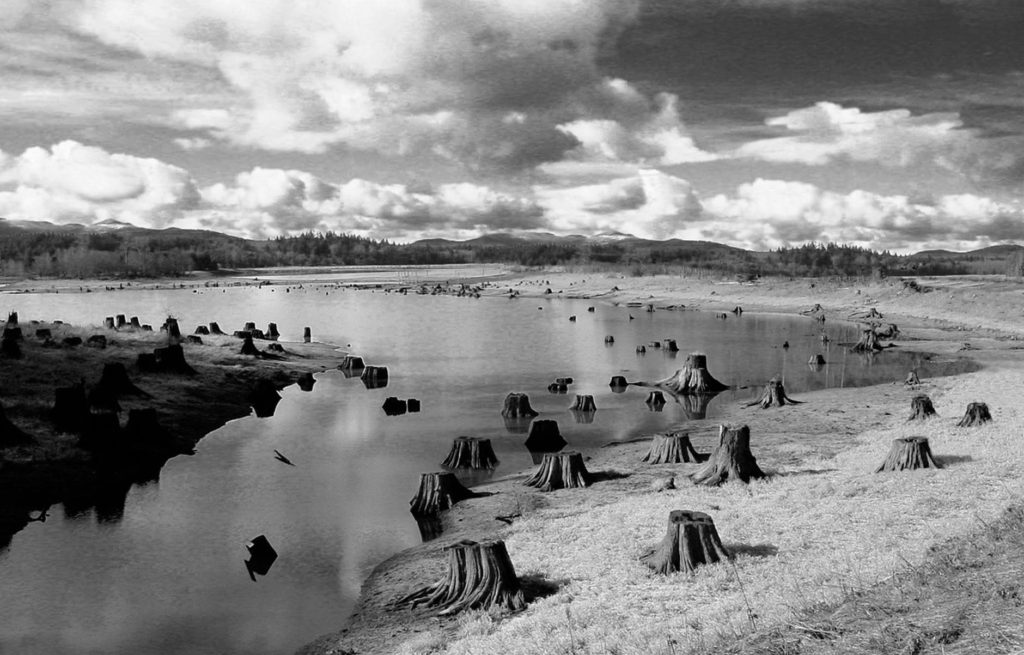I initially wrote in 2011 about my experience with the Act and a few cases have come through since that help understand the legal rights in a tree cutting situation.

Replacing the Trees
In Bulson v. Helmold, 2016 U.S. Dist. LEXIS 140471 (N.D. Ill. Oct. 11, 2016) a federal court decided that the method of determining the proper trees to claim to replace the trees that were cut was appropriate. The Plaintiff in Bulson used a similar method to the Plaintiff in Marsella v. Shaffer, 324 Ill. App. 3d 134, 142 (2d Dist. 2001). Both Plaintiffs, due to the large trees involved, the size of which could not be replanted, took the total diameter of all trees and then planned to replant as many 2 inch trees as needed to meet the total diameter.
The court in the Bulson case also confirmed that the statutory language requiring the appointment of 3 arborists was only applicable to commercial timber and trebling damages for non-commercial trees was appropriate.
Diminution of Value
In 2014, the case of Giese v. Neal, 2014 IL App (1st) 133914 U was decided and the appellate court determined that under the facts of that case, a diminution of value of the real estate (the difference in value in the property with the trees and without) was the appropriate measure of damage as opposed to replacement tree costs. In Giese, the owner of the property sold it before the case was decided and the court concluded that awarding replacement costs would not be appropriate if they no longer owned the property to actually replace the trees.
These cases show that Plaintiffs who have had their trees cut must proceed properly when deciding on what damages to pursue. A Plaintiff who actually incurs the replacement costs before they sell the property will have a better chance at recovering treble damages on that amount as opposed to being forced to get an appraiser to confirm a loss in value of the real estate. Defendants will likely be able to counter that appraisal with one that may show no damage or an increase in value for removing trees that may have had to be taken down sometime in the near future anyway.
Life Estate
A third case, McKinney v. Mills, 2013 IL App (5th) 110559 U, held that a person who was granted the ability to live on another’s property for their whole life, called a life estate, could not be sued for cutting trees on the property. Written agreements disallowing tree cutting are therefore necessary for any owner to bring action against a tenant or life estate possessor.
Please feel free to call me anytime with a tree cutting issue to see if I can help guide you through these decisions to resolve the case in the best way possible.
Published August 10, 2011
As a lawyer practicing in mostly rural McHenry County, Illinois, I have clients come to our office frequently who have had trees cut down by neighbors who do not bother to find out where the property line is located. You would think this type of claim would be simple because liability is not an issue where there is no dispute as to the property line but there always seems to be a dispute on value. The client wants the same 80 foot tall tree dropped into the ground but that is impossible. The insurance company and/or tree cutter think they did the client a favor and increased the property value by taking down an old tree. Or each party has a position somewhere in between these two extreme examples.

Valuing the loss in Illinois involves the Wrongful Tree Cutting Act, 740 ILCS 185/0.01 et seq., which provides treble damages on the “stumpage value” or the value of a standing tree. Almost the entire act defines the responsibilities of the Director of the Illinois Department of Natural Resources and the discretionary ability of the court to order the Director to obtain 3 appraisals of the stumpage value and to take the average to decide the issue of valuation.
What is the value of the tree?
Every case I have been involved it as plaintiff included a motion by the defendant to obtain these appraisals but 17 Ill. Adm. Code 1585.20(b)(1) causes those appraisals to be worthless in most situations because the appraisers are not allowed to assign values “to any tree that will not meet the definition of commercial timber. This Part does not apply to replacement, aesthetic, shade-tree or landscaping value.” Despite this clear flaw in the regulations, the court in Marsella v. Shaffer, 324 Ill. App. 3d 134, 142 (2d Dist. 2001) confirmed that the Wrongful Tree Cutting Act extends to all trees, not just trees designed for use as timber. In addition, the court in Wujcik v. Gallagher, 232 Ill. App. 3d 323, 329 (2d Dist. 1992) reviewed a case involving tree cutting and confirmed that treble damages are appropriate for “acknowledging environmental injuries and holding wrongdoers accountable for actual damages.”
An expert appraiser must then be retained by the injured property owner to prove its damages and certified arborists that utilize the American Society of Consulting Arborists Guide for Plant Appraisal should be sought for a proper appraisal. The arborist will rate the condition and location of the cut trees and apply those ratings to a formula involving the species and trunk size to determine the value of the tree.
How are the damages awarded?
Treble damages are then calculated from the value and the extent of possible damages under the Act that can be awarded will be known. The injured client must realize that this value will not result in a mature tree being able to be planted for that price but it will be sufficient for a reasonable size tree with additional money left over to compensate the victim for the loss. The parties should also be aware that the finder of fact can, in lieu of treble damages, award actual and punitive damages as it deems just.
The court in Aaron v. Hendrickson, 221 Ill. App. 3d 842, 849 (5th Dist. 1991) confirmed that the Act was a remedy “additional [] to trespass.” While judgment could not enter on the treble damages and punitive damages, the alternative pleading of trespass with a prayer for punitive damages would allow the finder of fact to assess fore than treble damages if the fact support it. See Marsella at 143. Punitive damages are warranted even against the unknowing tree cutter who does not check a survey to determine the property line location. In Rodrain v. Seiber, 194 Ill. App. 3d 504, 510 (5th Dist. 1990), the court upheld a punitive damages award where the defendant ordered a survey but did not bother to wait for it to be drafted before the tree cutting commenced. Therefore, based on the net worth of the defendant and the egregiousness of the situation, much more than treble damages could be awarded.
In sum, tree cutting cases tend to be litigious due the varying ideas that people have about the value of trees, however, plaintiffs can be awarded significant damages and can use that leverage in negotiation. Defendants can also attempt to persuade the finder of fact of the minimal value and the lack of malice to avoid punitive damages.















